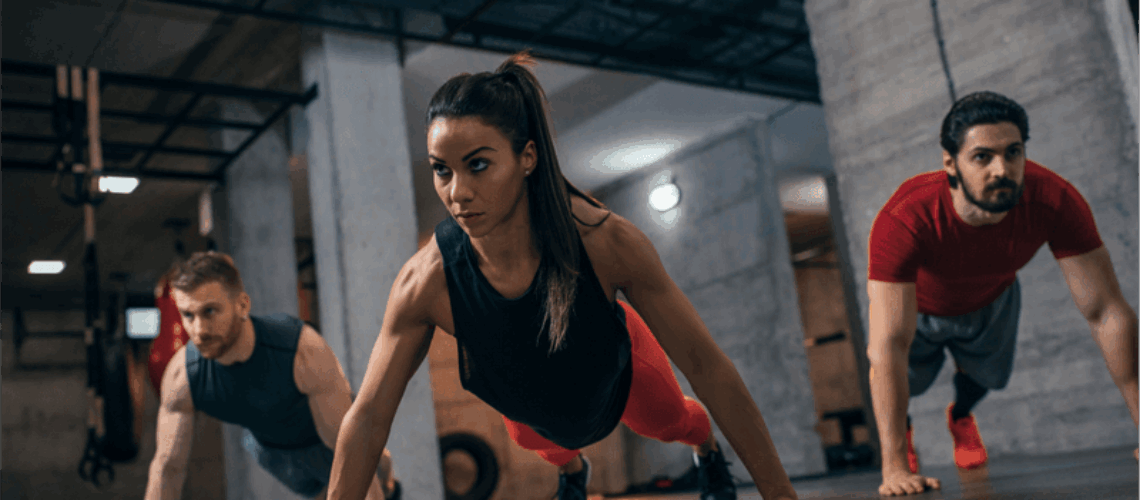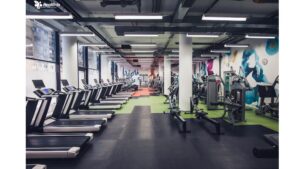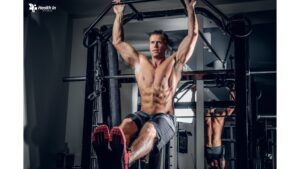
Why Start a Fitness Journey?
Starting a fitness journey can be a life-changing decision that positively impacts every facet of your well-being. Engaging in regular physical activity offers numerous benefits beyond physical health. For instance, it can enhance cardiovascular health, improve muscular strength, and boost flexibility. Moreover, the mental and emotional advantages are significant; exercise reduces stress, elevates mood, and increases self-esteem. By committing to a fitness journey, you not only aim for a healthier body but also cultivate a positive and resilient mindset. This holistic improvement in your physical and mental health can lead to a more fulfilling and balanced life.
Physical activity helps reduce the risk of chronic diseases such as heart disease, diabetes, and obesity. Additionally, it strengthens bones and muscles, improves joint health, and enhances mobility, which is particularly important as we age. Mentally, exercise stimulates the production of endorphins, which are natural mood lifters. Consequently, regular exercise can combat anxiety and depression, improve sleep quality, and sharpen cognitive function. Therefore, when you start a fitness journey, you are investing in a healthier future and a better quality of life.
Setting Realistic Fitness Goals
SMART Goals
Setting realistic and achievable goals is the cornerstone of any successful fitness journey. The SMART criteria—Specific, Measurable, Achievable, Relevant, and Time-bound—provide a framework for setting goals that are clear and attainable. For example, instead of a vague goal like “get fit,” you might aim to “run 5 kilometers in 30 minutes within three months.” This goal is specific (run 5 kilometers), measurable (in 30 minutes), achievable (with proper training), relevant (to your fitness improvement), and time-bound (within three months).
Short-Term vs Long-Term Goals
Balancing short-term and long-term goals is essential for maintaining motivation and seeing continuous progress. Short-term goals provide quick wins and keep you motivated. These might include weekly targets like completing three workout sessions or drinking eight glasses of water daily. Long-term goals ensure that you stay committed to your overall fitness journey, such as losing 20 pounds in six months or running a marathon next year. By achieving your short-term goals, you build momentum and confidence, making your long-term goals more attainable.
Choosing the Right Exercise Routine
Types of Workouts
There are various types of workouts to choose from, each offering unique benefits. Strength training builds muscle, increases metabolism, and improves bone density. Cardio exercises like running, cycling, and swimming enhance cardiovascular health and endurance. Flexibility exercises, such as yoga and Pilates, improve range of motion, reduce the risk of injury, and promote relaxation. High-intensity interval training (HIIT) combines short bursts of intense exercise with periods of rest, offering an efficient way to burn calories and improve fitness.
Finding What You Enjoy
Finding activities you enjoy is crucial for maintaining a consistent workout routine. Experiment with different types of workouts to discover what you find most engaging and fun. If you enjoy dancing, consider taking Zumba classes. If you love nature, try hiking or outdoor running. Enjoyment is key to consistency; the more you enjoy your workouts, the more likely you are to stick with them long-term. This approach not only helps you stay motivated but also makes your fitness journey a pleasurable part of your daily life.
Creating a Workout Schedule
Frequency
Determine how often you can realistically commit to working out each week. Beginners might start with three days a week and gradually increase to five or six days as they build endurance and strength. Consistency is more important than intensity at the beginning. Establishing a regular workout routine helps form healthy habits and prevents burnout.
Duration
Decide on the duration of each workout session. Aim for at least 30 minutes per session to start, gradually increasing the duration as your fitness improves. Even short, 10-minute sessions can be beneficial, especially for those with busy schedules. The key is to stay active regularly and progressively increase the intensity and duration of your workouts.
Balancing Different Types of Exercise
Incorporate a mix of strength training, cardio, and flexibility exercises to ensure a well-rounded fitness routine. This balance helps prevent boredom and reduces the risk of injury by working different muscle groups and improving overall physical conditioning. For example, you might do strength training on Mondays and Wednesdays, cardio on Tuesdays and Thursdays, and yoga or stretching exercises on Fridays.
Nutrition for Fitness
Importance of Diet
Nutrition plays a vital role in your fitness journey. What you eat significantly affects your performance, recovery, and overall health. Fueling your body with the right nutrients ensures you have the energy to perform and recover from workouts. A balanced diet supports muscle growth, enhances endurance, and helps you achieve your fitness goals more efficiently.
Macronutrients
Focus on a balanced intake of macronutrients: carbohydrates, proteins, and fats. Carbohydrates provide energy for your workouts, proteins support muscle repair and growth, and healthy fats are essential for overall health and hormone production. Incorporate a variety of whole foods, including lean meats, fish, eggs, dairy, nuts, seeds, fruits, and vegetables, to meet your nutritional needs.
Sample Meal Plans
Create meal plans that align with your fitness goals. For example:
- Breakfast: Greek yogurt with berries and nuts provides a good mix of protein, carbs, and healthy fats to start your day.
- Lunch: Grilled chicken salad with mixed greens, avocado, and a light vinaigrette offers a balanced meal rich in protein and healthy fats.
- Dinner: Baked salmon with quinoa and steamed vegetables delivers essential nutrients and supports muscle recovery.
- Snacks: Apple slices with almond butter or a protein smoothie can help maintain energy levels throughout the day.
Essential Workout Gear and Equipment
Clothing
Invest in comfortable, moisture-wicking workout clothing that allows for a full range of motion. Proper workout attire not only enhances performance but also prevents discomfort and skin irritations. Look for fabrics that breathe well and fit comfortably.
Footwear
Proper footwear is crucial for preventing injuries and ensuring comfort during workouts. Choose shoes that provide the right support for your specific type of exercise. Running shoes differ from weightlifting shoes in terms of support and cushioning. Investing in good-quality footwear tailored to your activity can make a significant difference in your performance and safety.
Home Equipment
Consider basic home equipment like dumbbells, resistance bands, and a yoga mat. These tools can help you create an effective workout routine at home, especially if you prefer not to go to a gym. As you progress, you might add more equipment, such as kettlebells, stability balls, or a pull-up bar, to diversify your workouts.
Tracking Your Progress
Fitness Apps
Use fitness apps to track your workouts, monitor progress, and stay motivated. Apps like MyFitnessPal, Strava, and Fitbit are popular choices that offer features such as workout logging, progress tracking, and community support. These tools can help you stay accountable and provide valuable insights into your fitness journey.
Journals
Keeping a fitness journal can help you document your journey, track your progress, and reflect on your achievements. Record your workouts, note how you feel, and set new goals regularly. A journal provides a tangible record of your progress and can be a source of motivation and pride.
Progress Photos
Take progress photos regularly to visually track your transformation. These can be incredibly motivating when you see the changes over time. Compare photos monthly to see the physical changes and stay motivated to continue your journey.
Staying Motivated and Overcoming Obstacles
Tips for Staying Motivated
- Set Mini-Goals: Break down your larger goals into smaller, more manageable ones. Celebrate small victories to keep your motivation high.
- Reward Yourself: Treat yourself to something enjoyable (non-food-related) when you reach a milestone. Rewards can include new workout gear, a massage, or a fun activity.
- Mix It Up: Change your routine occasionally to keep things interesting. Try new classes, activities, or workout partners to maintain enthusiasm.
Handling Setbacks
Setbacks are a natural part of any fitness journey. Whether it’s an injury, illness, or lack of motivation, it’s important to stay positive and get back on track as soon as possible. Learn from setbacks and use them as opportunities to adjust your approach and reinforce your commitment.
Incorporating Rest and Recovery
Importance of Rest
Rest days are essential for allowing your muscles to recover and grow. Overtraining can lead to injuries and burnout. Listen to your body and ensure you get adequate rest to prevent overuse injuries and maintain optimal performance.
Techniques for Recovery
Incorporate techniques such as stretching, foam rolling, and light activities like walking or yoga on rest days to aid recovery. Adequate sleep, proper hydration, and balanced nutrition also play crucial roles in the recovery process.
The Role of Hydration
Importance of Water
Staying hydrated is crucial when starting a fitness journey for overall health and optimal performance during workouts. Proper hydration helps regulate body temperature, lubricate joints, and transport nutrients to cells, ensuring your body functions efficiently. Dehydration can lead to decreased energy levels, muscle cramps, and impaired physical function, hindering your progress and performance. Therefore, drinking adequate water is essential for maintaining the energy and stamina needed throughout your fitness journey.
How Much to Drink
Aim to drink at least 8 glasses of water a day











